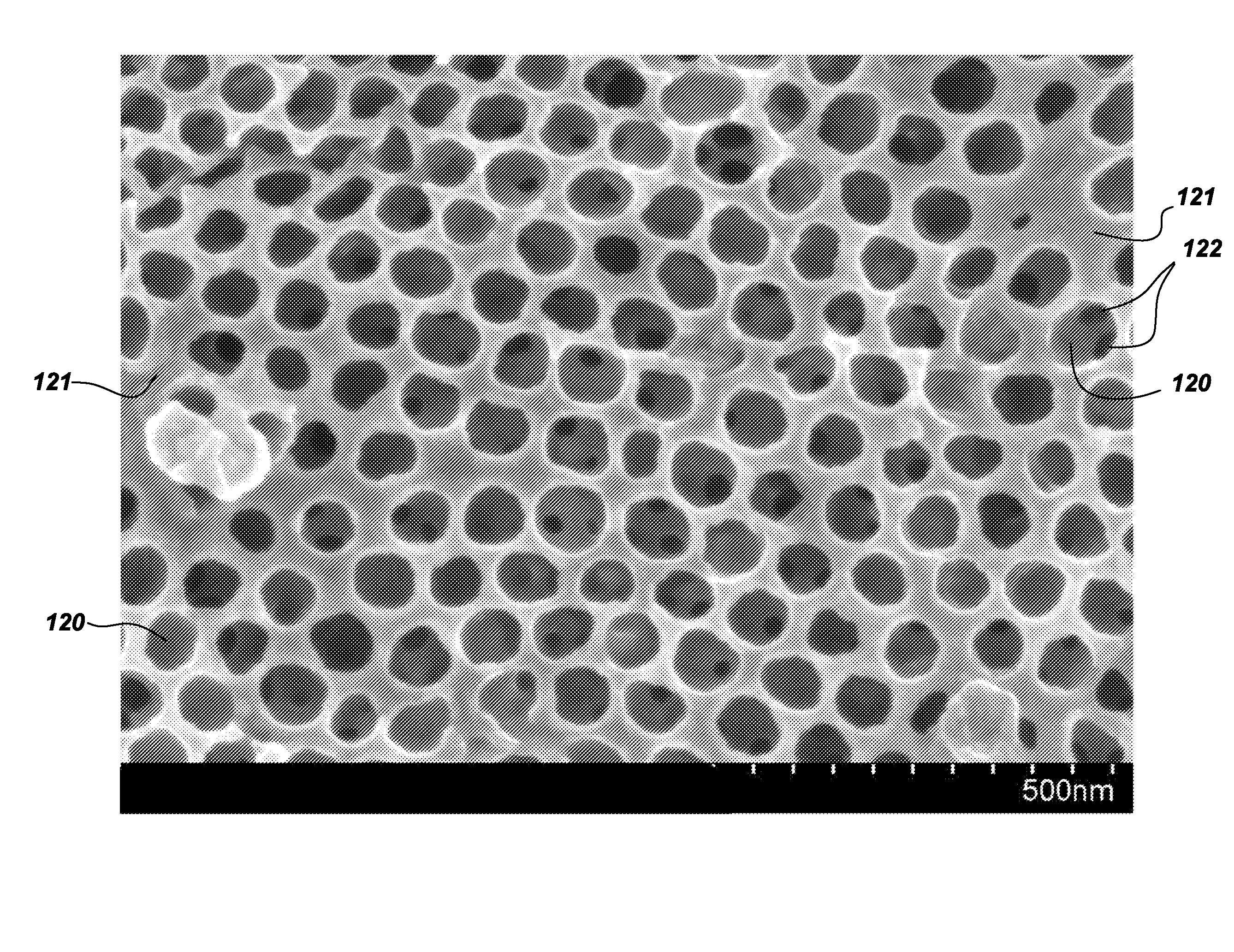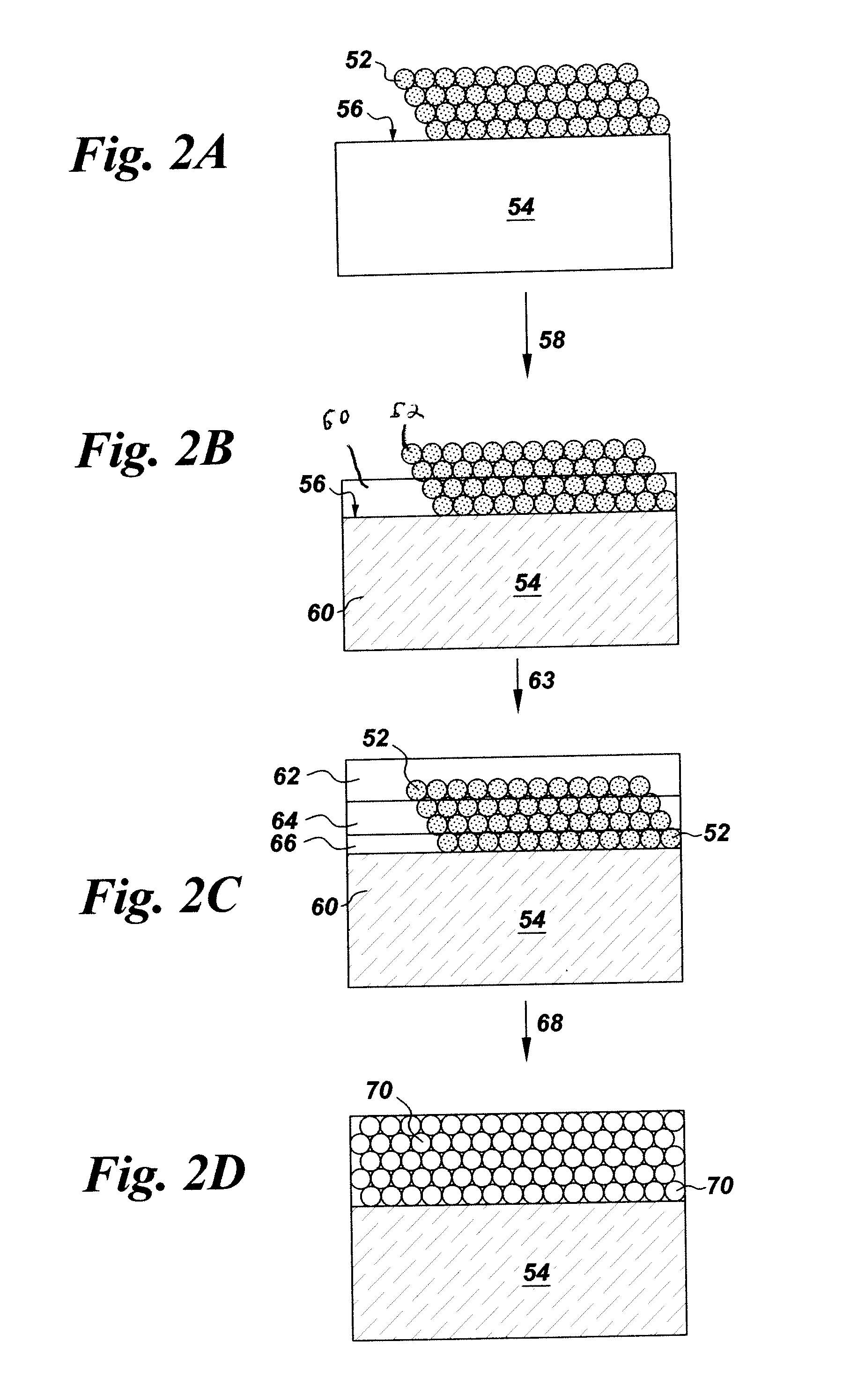Particle-templated membranes, and related processes for their preparation
a technology of particle-templated membranes and membranes, which is applied in the field of membranes, can solve the problems of reducing flow rates and productivity, viral contaminants leaching through membranes, and overall process can be often complex and time-consuming
- Summary
- Abstract
- Description
- Claims
- Application Information
AI Technical Summary
Benefits of technology
Problems solved by technology
Method used
Image
Examples
examples
[0076]The examples which follow are merely illustrative, and should not be construed to be any sort of limitation on the scope of the claimed invention.
[0077]The template prepared in this example was formed on the top surface of a section of a polyethersulfone membrane (300,000 MWCO material; from GE Healthcare, Westborough, Mass.). The membrane was in the shape of a flat sheet, and had approximate dimensions of 8 inches×8 inches (20 cm×20 cm). The spherical particles were provided in the form of a polystyrene (PS) latex dispersion (Polysciences, Inc., Warrington, Pa.). The average particle size (diameter) in the dispersion was about 96 nm.
[0078]The polystyrene-based template was formed by draw-down casting of the polystyrene dispersion on the top surface of the membrane substrate. The template was then allowed to dry, and had an approximate thickness of 500 nm to 2 microns. A 2.5% polyallylamine (PAA) solution in water was loaded from the backside of the membrane substrate. While t...
PUM
| Property | Measurement | Unit |
|---|---|---|
| Diameter | aaaaa | aaaaa |
| Diameter | aaaaa | aaaaa |
| Size | aaaaa | aaaaa |
Abstract
Description
Claims
Application Information
 Login to View More
Login to View More - R&D
- Intellectual Property
- Life Sciences
- Materials
- Tech Scout
- Unparalleled Data Quality
- Higher Quality Content
- 60% Fewer Hallucinations
Browse by: Latest US Patents, China's latest patents, Technical Efficacy Thesaurus, Application Domain, Technology Topic, Popular Technical Reports.
© 2025 PatSnap. All rights reserved.Legal|Privacy policy|Modern Slavery Act Transparency Statement|Sitemap|About US| Contact US: help@patsnap.com



